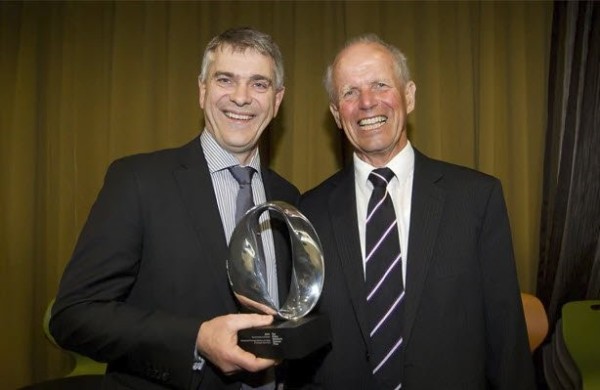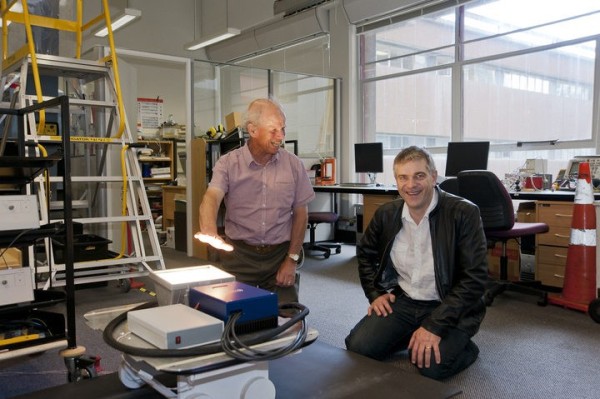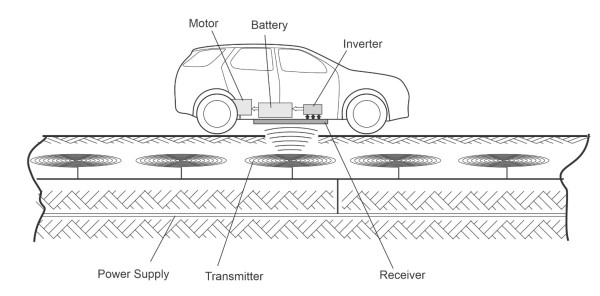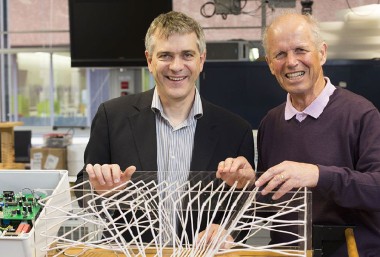For over 30 years, UniServices has played a unique role injecting many of Aotearoa’s best ideas into the wider world.
As a not-for-profit organisation, UniServices has been key in advancing research and commercialising it to deliver positive community impact. They aim to connect academia with businesses, the government, and the community to nurture the ideas and intellectual property (IP) that arises from the brilliant minds at the University of Auckland.
UniServices have effective processes regarding IP management, with a strong focus on due diligence. In addition, they boost IP delivery efficiency by partnering with local patent attorneys, such as AJ Park.
Amongst their impressive portfolio, UniServices has helped commercialise ideas such as cutting edge earthquake protection devices, digital AI powered people, and 3D planners for joint replacement surgery through to spinoff companies.
A new era of charging technology
Arguably the greatest success story of UniServices is the creation of HaloIPT in 2010 – a company with a license to use UniServices’ wireless charging IP.
The story of HaloIPT begins with John Boys and Andrew Green, who began working together at the University of Auckland in the 1980s to research and develop improved Inductive (contactless) Power Transfer (IPT) technology. They were later joined by Grant Covic (co-founder of HaloIPT).
By the 1990s, basic implementations of wireless power transfer had been used for a long time across small distances (millimetres). Despite efficient wireless power transfer over greater distances being technically challenging, the group recognised the opportunities for its potential use across a broader range of applications.
Over the years, the group homed in on finding solutions for the challenges faced by wireless charging at scale, increasing the charge gap and tolerance to movement to 10’s of centimetres while remaining efficient. Today, we see their technology used throughout the world, and across many applications from factories that depend on automated systems or clean-room environments, to charging electric vehicles (EVs).
“When we began, wireless power was considered largely impossible or too inefficient and therefore suitable only for low power and closely coupled applications. This gave us a decade of opportunity to learn and discover, solving relevant industry problems before much of the world recognised the potential,” says Boys.
The road to wireless EV charging
Covic, Boys and Green together set out to reimagine how the technology could be used to improve accessibility to charging and reduce the time between charges.
“We recognised that this technology had the potential to remove the most significant barriers to EV adoption, namely; plug-in and range anxiety. It was worth the investment and time if we could help develop a future that our families could be proud of,” says Covic.
UniServices saw the future commercial opportunities, and under direction from Will Charles, it made a strategic investment into the future of wireless technologies in the early 2000s. Their work also led to Boys and Covic accepting the $500,000 Prime Minister’s Science Prize in 2013.
“We had already seen the impact that efficient high power wireless charging had made in the global factory automation and materials handling market (almost all clean room manufacturing plants use technology based on John and Grant’s original IP). In 2007 Toyota sold its millionth Prius and we could see that a once in a generation change was coming. We decided to use our head start and the royalties we had received from materials handling to develop systems that would facilitate the move to make electric vehicles safer and more convenient to use,” says Charles.

Pictured: Grant Covic and John Boys accepting the Prime Minister’s Science Prize
To expand their patent portfolio, AJ Park Patent Attorney Wes Jones worked with UniServices to capture the IP from Boys and Covic’s research in this area.
“Not only is the technology deeply interesting, it’s also satisfying to know that the role we are playing in protecting the technology will assist it being put to work as part of a sustainable future,” says Jones.
Recognising that the EV revolution was just around the corner, UniServices saw a future with fewer emissions, quieter streets, and lower rates of respiratory illness from vehicle pollution. There was an opportunity for the technology to play a part in solving range anxiety - a major factor slowing down EV adoption. The technology could be used in roads, bus and taxi ranks, parking lots, and driveways, allowing EV batteries to be topped up with charge throughout the day. This would preserve the life of batteries by preventing them from draining too much, and would allow smaller batteries to be used over greater distances.
EVs presented new challenges for the technology. In the initial phase, technology solutions were developed for overnight EV charging. This required slow charge rates (~2-3kW), but had much larger uncertainties in parking alignment and air-gaps compared to industry applications. Charge rates would need to be increased for on-the-go daytime charging and for charging infrastructure built into roadways.
The technology would need to achieve charge rates of 50-100kW and beyond, and a charge distance of ~30cm to service large vehicles. Converters needed to be designed that could efficiently handle the large currents required for charging at higher power levels. Concentrated magnetic fields needed to be generated that extended the required distance. Leakage fields also needed to be controlled to ensure compliance with standards and avoid interference with other devices.
There were significant developments in this period in the power electronics field and in the magnetic structures field. For power electronics, there were improved power control methods, and improved converters and compensation circuits.
Around this time, Boys and Covic developed world-leading new technology for creating controlled magnetic fields that extended a significant distance from thin structures. The structures are now known as magnetic power transfer pads and are a key part of UniServices' patent portfolio.

Pictured: John Boys and Grant Covic working on the IPT technology
These improvements were used to design a charging system for moving vehicles. The idea was that charging pads would be placed in a roadway and then energised in sequence as a vehicle moved over them, providing continuous charging. A test track was subsequently built in France by technology partner QualcommHalo that validated the functionality of this concept – a key milestone.

IP protection
UniServices has always put patenting and IP protection at the centre of their business model. When novel ideas emerge from academia, patenting allows the ideas to be transformed into assets that can be licensed or sold to other businesses. The UniServices patenting strategy involves ensuring that the protection of the idea is kept broad, allowing licenses to be granted for multiple different applications.
This broad IP strategy has meant that the UniServices wireless charging technology can be licensed across multiple industries, including trains and buses, and factory automation robots.
“UniServices has blazed a path in the commercialisation of IP for others to follow. It has been a pleasure to work with the UniServices team and the inventors to create commercially relevant IP rights,” says Jones.
The future
The initial work of Emeritus Distinguished Professor Boys has been continuously developed over the past two decades by Professors’ Covic, Madawala, Hu and Dr Thrimawithana within the power electronics research group at the University of Auckland, leading to this group being a global leader of IPT technology across many applications. The work is set to continue with the addition of NZ government MBIE funding for electrified transport, international industry collaborations, such as WiTricity, and academic collaborations such as the US NSF funded centre ASPIRE (Advancing Sustainability through Powered Infrastructure for Roadway Electrification), led by Utah State University.
As EV technology continues to be scaled and improved, more EV infrastructure is rolled out, and pressure for a reduction to global emissions boils, EVs will be adopted at an exponential rate in the years to come.
The IPT technology is set to play a role in eliminating range anxiety, and making EVs the obvious choice for everyone.







